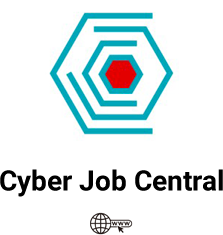Deciphering the Code: Unveiling the Ideal Candidates

Author: Colleen Lennox, Founder & CEO of Cyber Job Central and Cyber Job Academy
In our increasingly digital and interconnected world, the success of any organization's cybersecurity endeavors hinges on their ability to identify and recruit the right candidates for their cybersecurity team. This blog will delve into the essential attributes, skills, and strategies needed to unlock the secret to selecting individuals who can effectively safeguard sensitive information and shield against evolving cyber threats.
The modern workplace is in the throes of a digital transformation where technology pervades every aspect of business operations. With this transition comes not only opportunities but also risks and threats. In this blog post, we will explore the challenges organizations face in attracting cybersecurity talent and how to adapt recruitment strategies to meet this demand. We will draw insights from a Forbes Technology Council article and a U.S. Department of Labor guide to create a comprehensive understanding of the cybersecurity talent landscape.
The State of Cybersecurity: A Precarious Balancing Act
The recent State of Cybersecurity Report published by ISACA has revealed significant findings that have a direct impact on the recruitment of cybersecurity talent. These findings provide a backdrop against which organizations must navigate to secure their digital assets.
The Pandemic's Impact on Staffing
The report attributes staffing shortages in the cybersecurity field to the COVID-19 pandemic. The pandemic prompted a significant shift in people's perspectives on life and work-life balance. It resulted in cycles of burnout and an uncertain world, leading many to leave their jobs during what has been dubbed the "Great Resignation." Shockingly, 1 in 4 U.S. workers quit their jobs in 2021, impacting every industry. Additionally, the widespread adoption of remote work has made the traditional office setup less appealing to many, contributing to the drying up of the talent pipeline. According to the report, only 44% of respondents manage staff with less than three years of experience, indicating a shortage of fresh talent.
The Elusive Qualified Candidates
While there is still interest in entering the cybersecurity field due to its demand and potential for a good income, organizations are struggling to find qualified candidates. Hiring managers lament skills gaps, with soft skills topping the list, followed by cloud computing, security controls, and coding skills. This emphasis on soft skills underscores a shifting mindset regarding their importance compared to technical skills. The ability to communicate effectively, collaborate, and adapt seems to be highly valued in the quest for success in the cybersecurity domain.
The Dilemma of Less Staff, More Work, and Growing Threats
The study paints a concerning picture, with 62% of organizations being significantly or somewhat understaffed. Furthermore, 60% of organizations reported difficulties in retaining cybersecurity personnel. A lean workforce that is burdened with more responsibilities is susceptible to burnout and attrition. Meanwhile, the threat landscape continues to expand, with cybercriminals always seeking opportunities. The report acknowledges a direct correlation between staffing levels, retention, and the frequency of cyberattacks.
Changing Perceptions: The New Generation of Cyber Warriors
Interestingly, the evolving cybersecurity landscape may not align with the career aspirations of younger generations. Growing up as digital natives, they have a high level of awareness about cybersecurity. What the cybersecurity field may need is a bit of rebranding and marketing to attract these tech-savvy individuals.
Strategies for Recruiting Cybersecurity Talent
To effectively recruit and retain cybersecurity talent, organizations must adapt their approach with the following strategies:
- Learning from Past Hirings: Gain insights from previous hiring decisions, whether they were successful or not, to inform future recruitment efforts.
- Interviews as Conversations: Create an interview environment that encourages open conversation and collaboration. In the cybersecurity world, where communication and collaboration are critical, the hiring process should reflect these values.
- Patience in Hiring: Avoid rushing to fill vacancies, even if understaffed. Hiring the wrong individuals can lead to more significant losses in time and resources. Be patient and prioritize quality over speed.
- Cultural Fit Matters: While technical prowess is important, also consider how well a candidate fits into your organization's culture. Culture fit often means finding someone with soft skills who is eager to learn and grow.
- The Power of Motivation: Keep in mind that highly motivated individuals can be taught and developed. Consider candidates with the right mindset and foundational knowledge, even if they lack extensive experience.
- Early Recruitment: Partner with educational institutions to recruit talent early. Providing exposure to your organization can attract individuals passionate about cybersecurity.
In a candidate-driven cybersecurity talent market, the key is to attract individuals genuinely passionate about the field and willing to adapt. By doing so and fostering a healthy organizational culture, you can confidently expect new employees to deliver value and become invaluable assets to your cybersecurity efforts.
Choosing Secure Service Providers
In addition to recruiting internal talent, organizations should also be discerning when selecting external service providers with strong cybersecurity practices. The U.S. Department of Labor provides valuable tips for making these choices:
- Assess Information Security Standards: Inquire about the service provider's information security standards, practices, and policies, and compare them to industry standards. Look for third-party audits to validate cybersecurity practices.
- Validation of Practices: Understand how the service provider validates its practices and the security standards it has implemented. Ensure the contract allows for the review of audit results demonstrating compliance with these standards.
- Review Industry Track Record: Evaluate the service provider's track record in the industry, including information security incidents, litigation, and legal proceedings related to their services.
- Past Security Breaches: Inquire about any past security breaches, the circumstances, and the service provider's response.
- Insurance Coverage: Find out if the service provider has insurance policies covering losses caused by cybersecurity breaches, including those resulting from internal or external threats.
- Contractual Provisions: When contracting with a service provider, ensure the contract requires ongoing compliance with cybersecurity and information security standards. Beware of contract provisions that limit the service provider's responsibility for IT security breaches. Include terms that enhance cybersecurity protection, such as requiring annual third-party audits and specifying information security and confidentiality standards.
In conclusion, identifying and recruiting the right cybersecurity talent and selecting secure service providers are essential components of a comprehensive cybersecurity strategy. In a rapidly evolving digital landscape, organizations must adapt their recruitment and vendor selection approaches to address the challenges posed by cyber threats effectively. By implementing the strategies and tips outlined in this blog, organizations can better position themselves to defend against the ever-changing cybersecurity landscape and secure their digital assets.



